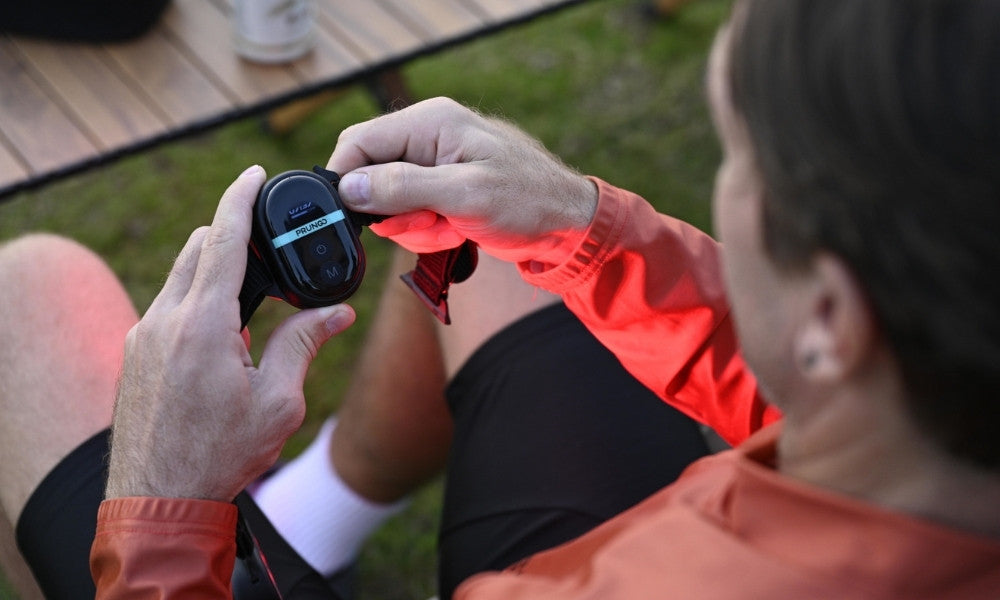When considering the safety of red light therapy for cancer patients, you need to fully understand how red light therapy devices work and what they do. Red light therapy is mainly used to relieve treatment side effects and relieve pain and has been considered safe by experts.
However, you should consult a healthcare professional before starting any new treatment. They can provide customized guidance based on your specific health needs. While red light therapy devices offer promising results, it is equally important to understand their uses and limitations. For your health, you should think carefully and seek expert advice before starting.
Learn about Red Light Therapy Devices
Red light therapy devices, also known as photobiomodulation, involve using specific wavelengths of light to penetrate the skin and promote healing. This non-invasive treatment uses a red light therapy device that emits low-intensity red and near-infrared light.
These devices come in various forms, such as wearable red light therapy modules, handheld devices, LED panels, and even full-body beds. The main goal of red light therapy is to enhance cellular function, thereby improving skin conditions, relieving pain, reducing inflammation, and accelerating wound healing.
How Red Light Therapy Works?
At its core, red light therapy is based on photobiomodulation, which uses specific wavelengths of light to activate mitochondria (cell energy factories) within cells, thereby improving cell function and promoting tissue repair. When mitochondria absorbs these light waves, they release more energy, which in turn reduces pain, repairs damaged tissue, and enhances cell metabolism. Red light therapy typically uses 650nm red light and 850nm near-infrared light, which have wavelengths that can penetrate the skin and stimulate a series of beneficial biological reactions.
PRUNNGO's red light therapy module uses self-developed focusing lens technology to optimize the effects of red light therapy further. The self-developed focusing lens technology reduces the natural divergence angle of 650nm red light to less than 10 degrees, allowing light energy to act highly concentrated on the surface of the skin and superficial tissue. This precise energy delivery significantly promotes collagen production, accelerates superficial wound healing, and reduces inflammatory responses.

For deeper treatments, PRUNGO uses deep-penetrating laser technology with 850nm near-infrared light, combined with polarizers commonly used in large medical equipment to convert laser light into polarized light. This light waveforms a more precise mechanism of action by aligning with biological structures. Polarized light penetrates in a spiral pattern, which can penetrate deeper into tissues, effectively relieving pain and accelerating inflammation repair.
Even though red light therapy is painless and safe, it combines the characteristics of red light and near-infrared light to provide a comfortable and efficient way to improve health. Before use, it is recommended to consult a medical professional to ensure the suitability of the therapy and master the correct use of the equipment to safely and effectively achieve physical therapy goals.
Is Red Light Therapy Safe for Cancer Patients?
You may be wondering, is red light therapy safe for cancer patients? Many scientific studies have explored this question. These studies confirm that red light therapy, also known as photobiomodulation, is generally safe for cancer patients. Researchers found no strong link between red light therapy and cancer progression.
Instead, they highlighted its potential benefits in relieving the side effects of cancer treatment. For example, red light therapy may help reduce pain and inflammation, which are common problems for cancer patients. While more clinical trials are needed to fully understand its effects, current evidence supports its safety and effectiveness.
Experts in the fields of oncology and photobiomodulation agree that red light therapy is safe for cancer patients. They emphasize that the treatment does not involve harmful ultraviolet rays, which can increase cancer risk. Instead, red light therapy uses specific wavelengths that can penetrate the skin without causing damage.
Experts also note that red light therapy can support cancer patients by promoting healing and reducing stress. However, they recommend consulting a healthcare professional before starting any new treatment. This ensures that the therapy fits your specific health needs and complements your existing cancer care plan.
Potential Benefits for Cancer Patients

1. Symptom Relief
Red light therapy offers considerable benefits to cancer patients by relieving symptoms associated with cancer treatment. This non-invasive treatment helps reduce pain and inflammation, which are common side effects of cancer treatment.
By enhancing cellular function, photobiomodulation promotes healing and relieves discomfort. Many cancer patients report an improvement in their quality of life after incorporating red light therapy into their treatment regimen.
Dr. Michael R. Hamblin, a professor at Harvard Medical School, states, "There is no evidence that red light therapy used for medical or aesthetic purposes causes cancer in humans."
This assurance from experts highlights the safety of red light therapy, making it a viable option for those seeking symptom relief during their cancer journey.
2. Supporting Cancer Treatment
While red light therapy is not a standalone cancer therapy, it can complement traditional cancer treatments. By supporting overall well-being, photobiomodulation enhances treatment outcomes and may contribute to anti-cancer effects.
The therapy works by promoting cancer cell death and improving the body's natural healing processes. This supportive role makes red light therapy beneficial for cancer patients who are undergoing conventional treatments.
Expert Testimony:
Experts in oncology and light therapy emphasize, "Red light therapy may have potential benefits as a complementary treatment for cancer. While it is not a standalone therapy for cancer treatment, it can be used alongside conventional treatments to support overall well-being and enhance treatment outcomes."
Incorporating red light therapy into your cancer care plan can provide additional support and improve your overall health. Always consult with healthcare professionals to ensure that this therapy aligns with your specific needs and complements your existing cancer treatments.
Potential Risks and Concerns

1. Does Red Light Therapy Cause Cancer?
When considering red light therapy, you may be concerned that it can cause cancer. Current research suggests that red light therapy does not cause cancer. Studies suggest that it may have anti-cancer effects. Unlike ultraviolet light, which is known to increase cancer risk, red light therapy uses specific wavelengths that do not damage DNA. This makes it a safer option for those concerned about cancer-related side effects.
What Science Says:
Red Light Therapy and Cancer: There is no evidence that red light therapy causes cancer. Some studies even highlight its potential benefits in cancer treatment, such as mitigating treatment side effects and supporting the immune system.
While the evidence is encouraging, red light therapy must be approached with caution. Always consult a healthcare professional to ensure it fits your health needs and complements your existing cancer treatments.
2. Effects on Tumor Growth
You may also be concerned about how red light therapy might affect tumor growth. Research in this area is still emerging, and findings are mixed. Some studies suggest that red light therapy may support cancer treatment by shrinking tumors, while other studies suggest that it may promote tumor growth. This highlights the need for more research to fully understand its effects.
What Science Says:
Red light therapy for people with cancer: Some studies suggest that cancers can shrink, while other studies suggest that tumors can grow larger. More research is needed to determine the safety of red light therapy for people with cancer.
Given these mixed results, you should discuss the use of red light therapy with your healthcare provider. They can help you weigh the potential benefits and risks to ensure your treatment plan is safe and effective. This is especially important if you are undergoing chemotherapy or treating chemotherapy-induced peripheral neuropathy, as red light therapy may help relieve these side effects.
Addressing Common Misconceptions
1. Misconceptions About Red Light Therapy
You may have come across various misconceptions about red light therapy, especially regarding its use in cancer treatment. One common misconception is that red light therapy causes cancer. This belief stems from confusion with ultraviolet light, which is known to increase cancer risk. However, red light therapy, or photobiomodulation, uses specific wavelengths that do not damage DNA. This makes it a safer treatment option.
Another misconception is that red light therapy can replace traditional cancer treatments. While photobiomodulation has supportive benefits, it should not be considered a standalone cancer treatment. It complements traditional treatments by relieving symptoms and enhancing overall well-being. Understanding these distinctions can help you make an informed decision to incorporate red light therapy into your health regimen.
2. Clarifying Safety Concerns
Safety concerns often arise when considering a new treatment. With red light therapy, it is important to understand its potential risks and benefits. While photobiomodulation is generally considered safe, its long-term effects remain unclear. Therefore, always seek the advice and guidance of a healthcare provider before beginning treatment and approach this therapy with caution.
When using red light therapy, take precautions to protect sensitive areas such as your eyes. While this treatment is safe for most users, minimizing exposure to the eyes can reduce potential risks. Always follow the manufacturer's instructions and consult a healthcare professional to ensure safe use.
By addressing these misconceptions and safety concerns, you can better understand the role of photobiomodulation in cancer treatment. This knowledge enables you to make informed choices, ensuring your treatment plan is aligned with your health needs and goals.
Safety Precautions and Considerations
It is also important to understand these safety precautions and considerations when you consider incorporating red light therapy into your health regimen. This non-invasive treatment has potential benefits, but you must follow specific guidelines to ensure its safe and effective use.
1. Guidelines for Safe Use
To maximize the benefits of red light therapy, follow established guidelines. These guidelines can help you use therapy safely and effectively:
- Consult a healthcare professional: Before starting red light therapy, consult a healthcare professional. They can provide personalized guidance based on your clinical needs and health status.
- Follow the manufacturer's instructions: Each device comes with specific instructions. Following these instructions ensures that you use the device correctly and safely.
- Limit exposure time: Avoid prolonged exposure to red light therapy. Short, continuous treatments are more effective and reduce the risk of adverse reactions.
- Protect sensitive areas: Protect your eyes from direct light exposure using protective eyewear. This precaution minimizes potential risks to your vision.
- Monitor skin reactions: Watch for skin reactions to treatment. If you notice any adverse reactions, discontinue use and consult a healthcare provider.
By following these guidelines, you can safely incorporate red light therapy into your daily routine, enhancing its therapeutic benefits while minimizing risks.
2. Importance of Medical Supervision
Medical supervision plays an important role in ensuring the safe use of red light therapy, especially for cancer patients. This non-invasive treatment, called photobiomodulation, requires careful consideration of your clinical condition. Here are the main reasons why:
- Tailored treatment plan: A healthcare professional can develop a treatment plan that fits your specific health needs. They’ll consider factors such as your cancer type, treatment stage, and overall health.
- Monitoring progress: Regular checkups allow healthcare providers to monitor your progress. They can adjust treatment as needed to ensure optimal results.
- Addressing concerns: If you have concerns about the effectiveness of your treatment, medical supervision provides a platform to discuss these issues. A professional can reassure you and adjust your treatment plan if necessary.
- Ensuring compatibility: Red light therapy should complement your existing cancer treatment. Medical supervision ensures that the treatment will not interfere with other clinical interventions.
Performing red light therapy under the supervision of a physician increases its safety and effectiveness. By prioritizing professional guidance, you can feel confident exploring the benefits of this non-invasive treatment.
Summary
In summary, red light therapy, or photobiomodulation, offers potential benefits to cancer patients through symptom relief and supportive care. However, you should always consult a healthcare professional before starting this therapy.
They can provide personalized recommendations based on your specific health needs and ensure that the therapy complements your existing cancer treatment. By prioritizing safety and professional consultation, you can confidently explore the benefits of photobiomodulation in your cancer care journey.
Related reading: KINEON MOVE+ Pro VS PRUNGO Red Light Therapy Module
















Share:
Can You Do Red Light Therapy Every Day?
Does Red Light Therapy Tighten Skin?